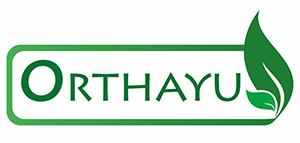Joint and muscle pain can be a frustrating experience, impacting your daily routine and overall quality of life. While medications can offer relief, many people prefer natural remedies that are gentle on the body and free from side effects. In this blog, we will explore some of the most effective home remedies for joint and muscle pain relief that you can try today.
Understanding Joint and Muscle Pain
Joint and muscle pain can result from various factors such as injuries, arthritis, overexertion, or even stress. Whether it’s acute pain after a workout or chronic discomfort due to a health condition, finding the right solution is crucial.
Common Causes:
Arthritis: A leading cause of joint pain, especially in older adults.
Injuries: Strains, sprains, and muscle tears often lead to pain.
Overuse: Repetitive movements can cause wear and tear on muscles and joints.
Inflammation: Conditions like tendinitis can cause pain due to inflammation in muscles and joints.
Top Home Remedies for Joint and Muscle Pain Relief
1. Warm Compresses and Hot Showers
Applying heat is one of the simplest and most effective remedies for easing joint and muscle pain. Warm compresses help improve blood circulation, relax stiff muscles, and reduce joint stiffness.
How to Use:
Use a heating pad or warm towel and apply it to the affected area for 15-20 minutes.
You can also take a warm bath or hot shower to relieve tension and pain.
Why It Works: The heat dilates blood vessels, increasing blood flow to the affected area, which helps reduce pain and stiffness.
2. Cold Therapy for Inflammation
Cold therapy is ideal for treating inflammation and swelling. It numbs the area and reduces blood flow, effectively minimizing swelling.
How to Use:
Wrap a few ice cubes in a cloth or use a cold pack.
Apply it to the painful area for 10-15 minutes.
Why It Works: Cold therapy reduces the metabolic rate of tissues, slows down the transmission of pain signals, and minimizes swelling.
3. Incorporate Anti-Inflammatory Foods into Your Diet
Your diet plays a significant role in managing joint and muscle pain. Consuming anti-inflammatory foods can help reduce inflammation and alleviate discomfort.
Foods to Include:
Omega-3 Rich Foods: Fatty fish like salmon, flaxseeds, and walnuts.
Fruits and Vegetables: Berries, leafy greens, and tomatoes.
Spices and Herbs: Turmeric, ginger, and garlic.
Why It Works: Anti-inflammatory foods help to combat inflammation in the body, which is often a major contributor to joint and muscle pain.
4. Massage with Essential Oils
Massaging with essential oils can provide immediate relief from joint and muscle pain. Oils like peppermint, eucalyptus, and lavender have natural analgesic and anti-inflammatory properties.
How to Use:
Mix a few drops of essential oil with a carrier oil (like coconut or olive oil).
Gently massage the affected area in circular motions for 5-10 minutes.
Why It Works: The massage improves blood flow, and reduces muscle tension, and the essential oils penetrate deep into the tissues to ease pain.
5. Epsom Salt Soak
Soaking in an Epsom salt bath is an age-old remedy for muscle and joint pain. The magnesium in Epsom salt helps relax muscles and reduce inflammation.
How to Use:
Add 2 cups of Epsom salt to warm bath water.
Soak for 20-30 minutes.
Why It Works: Magnesium helps to reduce muscle cramps and pain, and the warm water soothes stiff joints.
6. Use Mustard Oil for Pain Relief
Mustard oil is a traditional remedy known for its anti-inflammatory and warming properties. It can be an effective massage oil for easing joint and muscle pain.
How to Use:
Heat a tablespoon of mustard oil and mix it with crushed garlic.
Let the mixture cool slightly and then massage it onto the affected area.
Leave it on for 30 minutes before rinsing off.
Why It Works: Mustard oil’s warming effect helps improve blood circulation, while garlic enhances anti-inflammatory properties, providing quick pain relief.
7. Stretches and Light Exercise
Staying active is essential for keeping your joints and muscles flexible. Light exercises and stretching can alleviate stiffness and improve mobility.
How to Use:
Incorporate daily stretches focusing on the affected areas.
Engage in low-impact exercises like walking, swimming, or yoga.
Why It Works: Regular movement helps lubricate joints, strengthens muscles, and reduces pain in the long run.
Conclusion
Joint and muscle pain can be debilitating, but these home remedies offer effective, natural relief. Incorporating these practices into your daily routine can make a significant difference in managing pain and improving your quality of life. Remember, consistency is key when using natural remedies. If your pain persists, it’s always wise to consult with a healthcare provider for a comprehensive approach to treatment.


